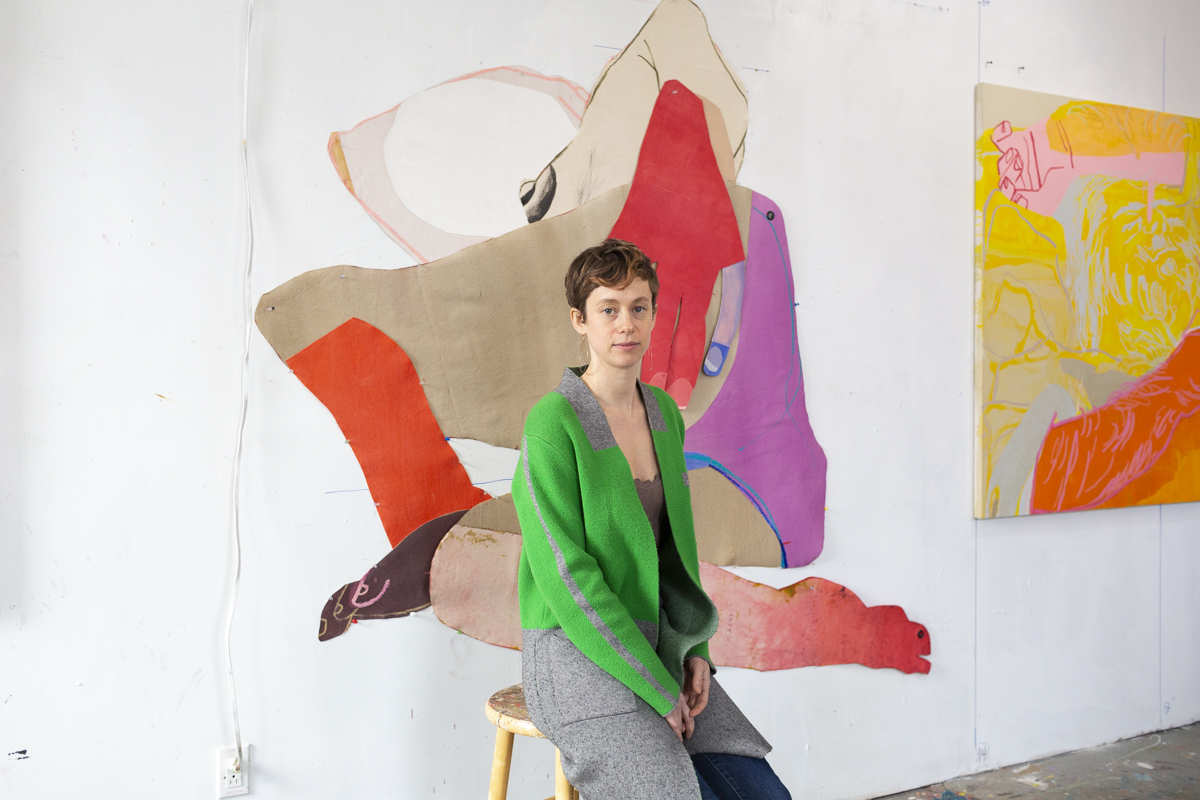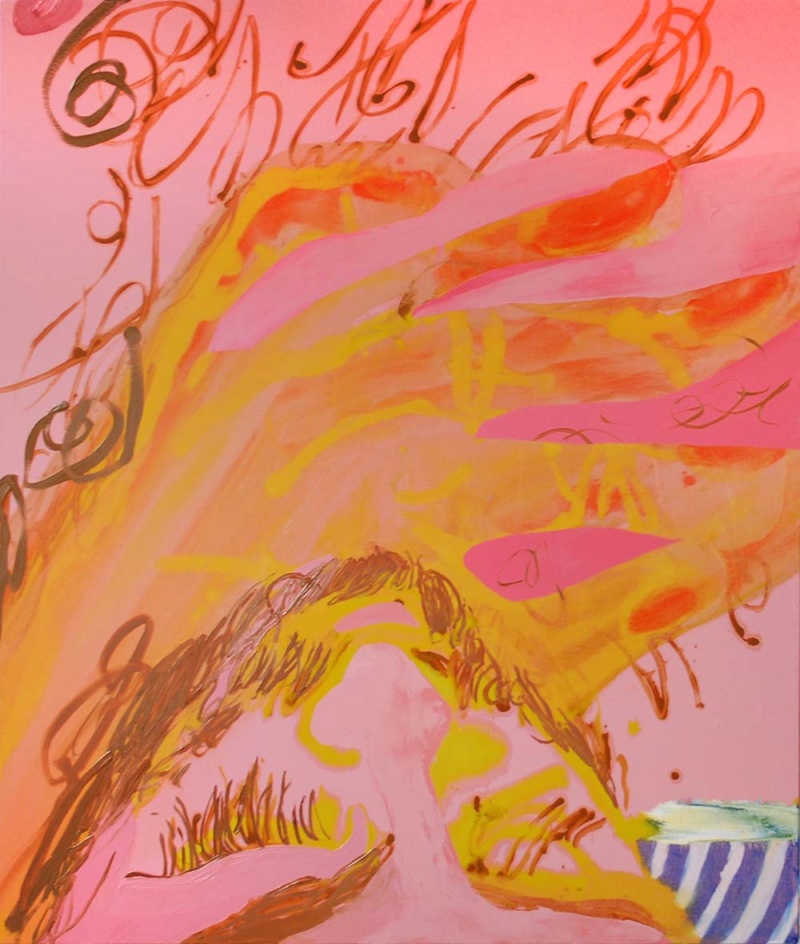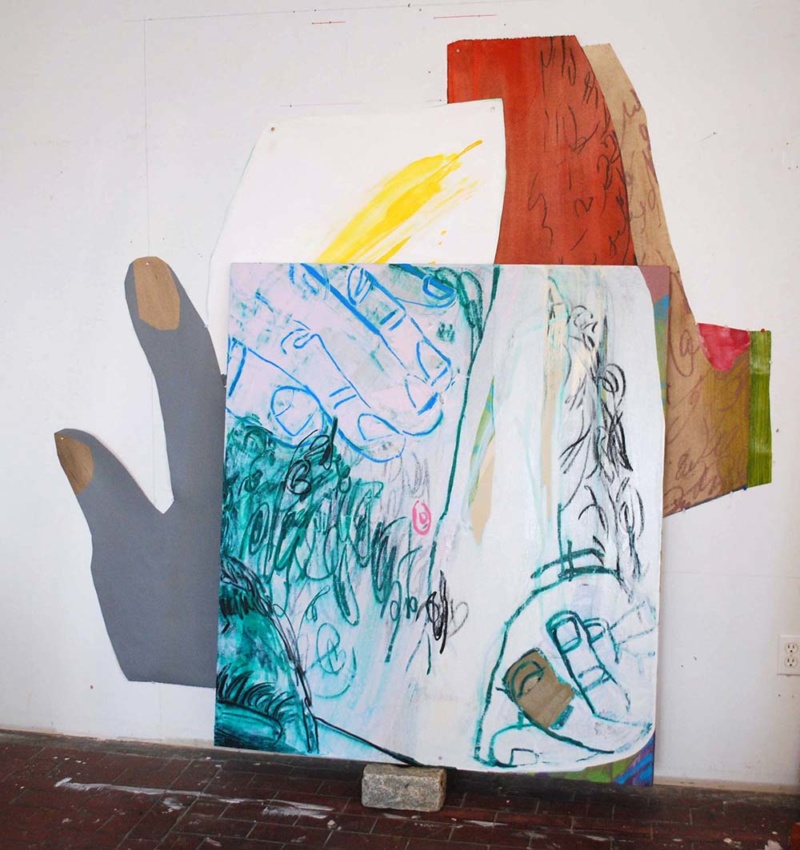
What is the process of painting but a long and never-fully-resolved lovers’ quarrel between touch and vision, hand and eye? That blissful moment when our not entirely congruent senses find a momentary reconciliation looks like the ultimate subject of most of Sarah Faux’s paintings. Since graduating from Yale’s MFA program in 2015, Faux—whose family name is pronounced “fox,” not “foe,” by the way—has found considerable acclaim, with one-person shows in Brussels and Shanghai as well as a couple of them in New York. And while her subject matter has remained consistent, her technique seems to be getting both more refined and more forceful by the day.
Stopping by Faux’s Crown Heights studio as she was preparing for her solo booth at Frieze New York with Capsule Shanghai, I found myself surrounded by half a dozen medium-sized paintings in progress or recently finished, as well as a few smaller ones and parts of a couple of her “cut-outs.” These are collaged canvas wall works that, she explains, reflect a lineage that goes back to Matisse’s reconstructed bodies. At Frieze New York, she intends to use them as works in themselves as well as backdrops on which to hang paintings—something she hasn’t done before. She also showed me a sheaf of monotypes recently made at the Lower East Side Printshop.

As with many of Faux’s paintings so far, the new ones are situated in a curious state of ambiguity between abstraction and representation, not unlike the work of some of the midcareer painters who’ve clearly inspired her, such as Amy Sillman and Charline von Heyl. The first time I went to Faux’s studio, all I could see at first was the abstraction—until, noticing that I was missing the point, she gently pointed out that all the paintings included figurative imagery, however loose or fragmented: here a hand, there a foot; here a nipple, there a behind; here a head, there a mons pubis… I was mortified, but she seemed tickled at being able to sneak in her corporeal references so subtly that her paintings could be enjoyed as just strikingly composed—that is, appealingly awkward—abstractions, even by mistake. Now, hyperconscious of my former obliviousness, I tend to see the images in Faux’s paintings first.
But when I then go on to describe the works by way of what they represent, which is hard to avoid, I somehow feel that I am doing them a disservice—that I am misdescribing as much as describing. Consider one of those I saw in the studio, in which the bottom of the canvas is occupied by part of an outlined male head—closed eyes with delicate lashes, nose, a bit of beard—while most of the rest of the rectangle is occupied by a hand that, under a spray of lovely cursive squiggles, floats in with considerable spatial ambiguity from the left—though where its wrist should be, aren’t those a couple of fingers, presumably of some completely other hand? I had to wonder: Is this a painting of one person, or two, or three? Differences dissipate as self or selves fragment. I’m inclined to believe that closed-eyed man must be dreaming those hands. But it makes me think that I might be dreaming too. When I see those eyes at the bottom of the painting, below the nose that is in turn below the chin, it’s as if my own head’s been turned upside down—a voluptuous vertigo. There’s an effect that was noticed long ago by William James in his Principles of Psychology (1890): “when we look at a landscape with our head upside down” or “lie on the floor and look up at the mouth of a person talking behind us”—like turning a painting upside down—what we see becomes estranged, and “we feel more freshly the value of the mere tints and shadings”; whatever we look at, even a human face, “we get it as a naked sensation and not as part of a familiar object perceived.” Something like that happens in this painting. No wonder it’s titled Tinges (2019).

Faux’s paintings are seriously sexy, not because they show bits of naked people, but because they do so in order to get at what James called naked sensation. She makes us intimate with color and facture. In Tinges, which I suspect has learned some of its fluency and immediacy from the monotypes, we make contact with a scarlet opacity and a cream translucency, with blue lines bent like iron wire and nameless gray stains that seem to linger under the surface of the canvas like blushes or bruises; our eyes seem to feel their way through layers of appearance, more like hands. Dry or wet, delicate or crude, smooth or sharp, there are as many kinds of touch in how paint rubs up against itself or sinks into or floats atop the canvas as there might be between any lovers, and they’re all in the painting.
Sarah Faux’s Cultured Commission is available for purchase on 1stdibs.










 in your life?
in your life?

